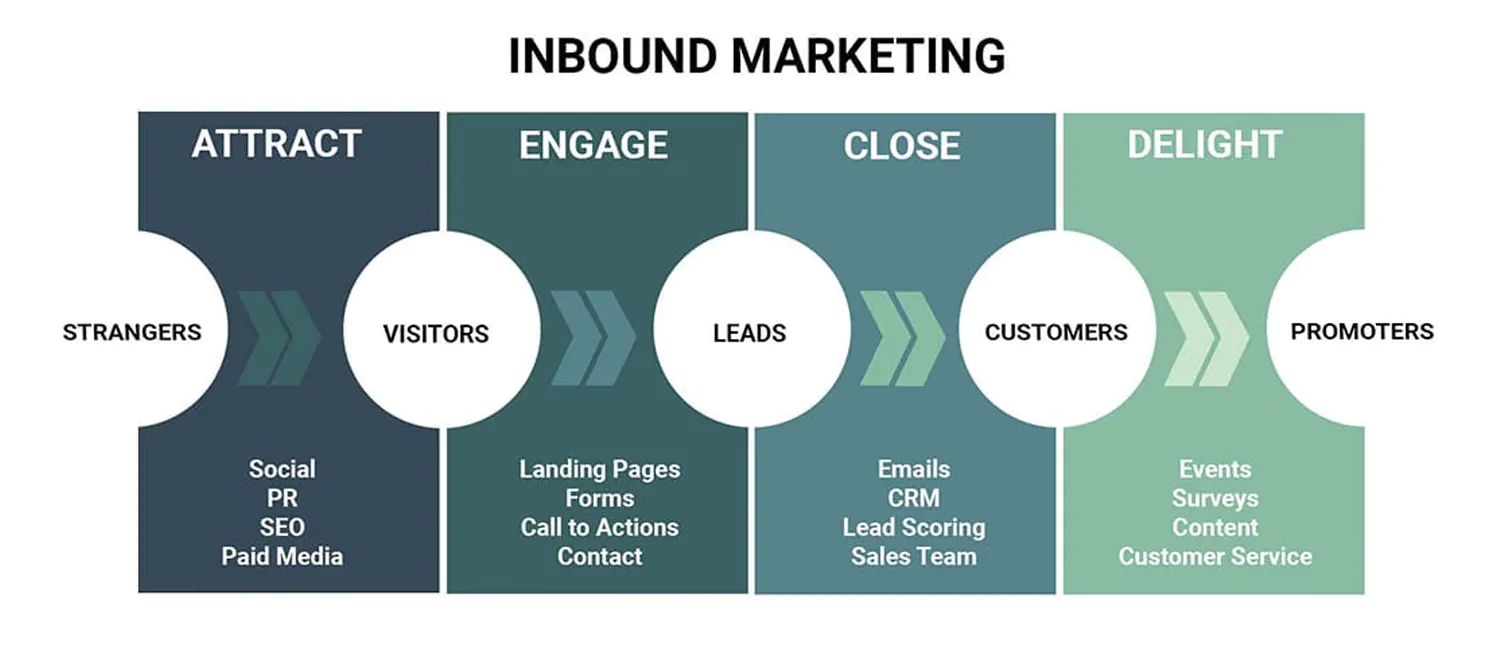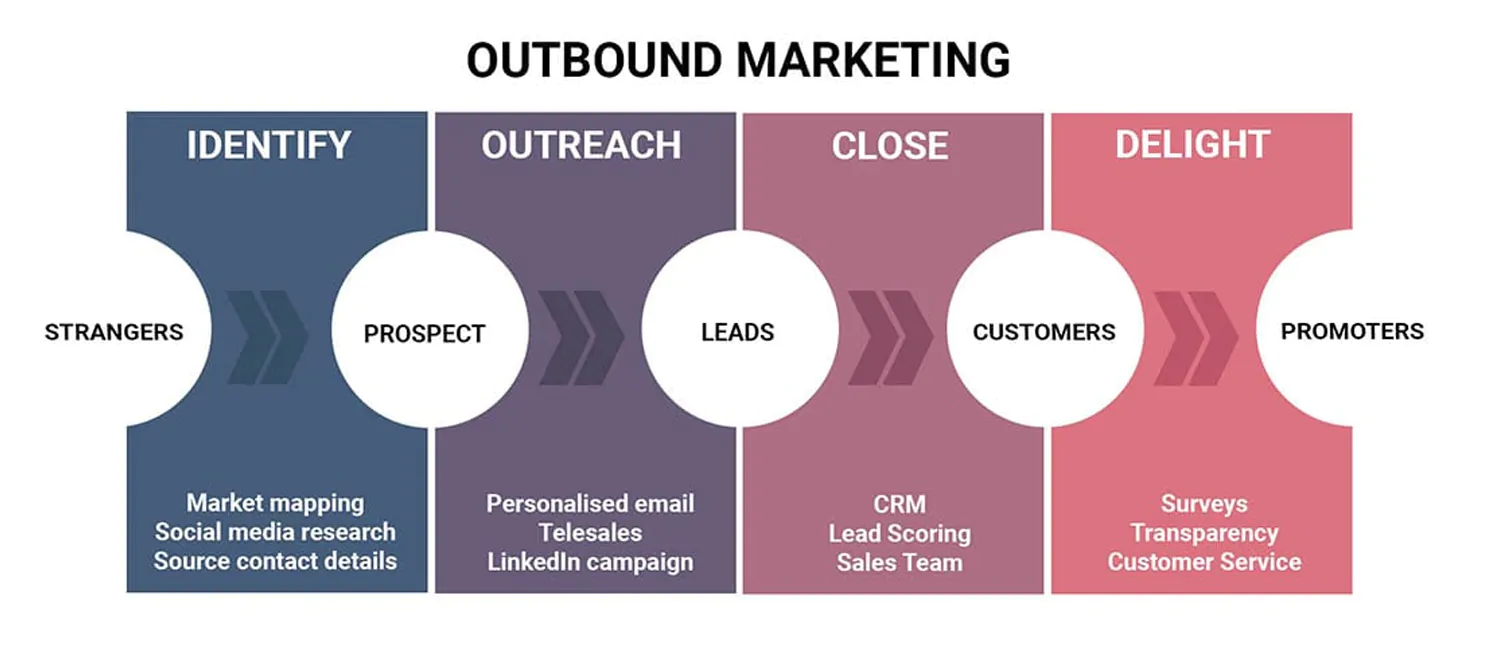Lead nurturing is an important aspect of any marketing strategy, but when it comes to inbound vs. outbound leads, where should you invest your time and resources?
The answer is both. This article explains why and how to approach it effectively.
Most leads you generate aren’t actually ready to buy. Lead nurturing helps you foster relationships with those prospects, earn their trust and loyalty, and help guide them through the conversion process. As a result, lead nurturing helps with sales growth while saving money. In fact, businesses that succeed at lead nurturing generate 50% more sales-ready leads at a 33% lower cost. They achieve this goal through a combination of inbound and outbound lead nurturing strategies.
Keep reading to learn the difference between inbound vs. outbound leads, ways they impact your bottom line, and how to approach inbound vs. outbound lead nurturing for ultimate success.
Key Takeaways
- Lead nurturing is learning how you can better meet the needs of your potential customers and guide them further down the sales funnel.
- Although inbound vs. outbound lead nurturing are very opposite approaches, each has its benefits, and they can work together to effectively deliver results.
- By knowing when and how to implement inbound vs. outbound lead nurturing, the two strategies can complement each other for a well-rounded and successful marketing strategy.
What Exactly is Lead Nurturing?
Lead generation is an essential part of business, but it’s also a key growth challenge. Lead nurturing is all about learning what customers need and what solutions will help alleviate pain points and problems.
Understanding your leads and identifying where they are in their customer journey can help you create relevant messaging that resonates with your prospects. This allows you to guide people further down the sales funnel so that, eventually, they’ll convert to customers.
Why is Lead Nurturing Important?
Leads come from different sources. Whether you acquire these potential customers through sales prospecting, an opt-in form on your website, or an email campaign, you’ve gathered a collection of contacts who might be interested in your products and services.
Just because someone has given you their contact information, however, doesn’t mean they’re willing to give you their money. The truth is, leads want information. Then, they use those details to make an informed purchase decision.
Today’s consumers are more discerning and have higher expectations than those of the past. The internet has given them the power to research the products and services they deem valuable. Social media has given them the platform to share public reviews and spread the word (good or bad) about the shopping experiences they’ve had.
All of this means that it’s more important than ever for businesses to nurture their leads and build meaningful relationships that result in customer loyalty.
Differences Between Inbound vs. Outbound Lead Nurturing
All lead generation falls into one of two categories: inbound vs. outbound leads. Inbound lead generation (pull marketing) entices people to contact you for information about your business’s offerings or to make a purchase. Methods like content marketing, social media campaigns, and SEO attract people to your website. In this way, prospects can decide when they interact with you.
Inbound lead generation:
- Teaches people about your business and what you provide
- Encourages audience engagement
- Demands the creation of quality content
- Requests permission for lead contact
Conversely, outbound lead generation (push marketing) is when you proactively reach out to potential customers using email campaigns, cold calling, and social selling methods. With outbound leads, you decide when people will see your message.
Outbound lead generation is:
- More focused on selling
- A one-way communication channel to your leads
- More costly
- Interruptive
Although they are very different approaches, inbound and outbound lead nurturing both share the same goal: to acquire more leads. When you understand your prospects and can segment the leads you generate, inbound and outbound lead nurturing can work together to effectively deliver optimal results.
How to Approach Inbound vs. Outbound Leads
A well-rounded lead generation strategy in which inbound complements outbound efforts is ideal, but there’s a time and place for everything. First, assess your goals and build a strategy that makes the most sense for your target audience and your business objectives.
Inbound generation is ideal if you want to:
- Use content creation to attract new leads
- Obtain leads over a longer timespan
- Attract leads that are interested in engaging with your company
- Sell to a larger scope of prospects
To attract inbound leads, research their needs and interests, as well as their purchase behavior. Find out what kind of content appeals to them, and create custom messaging that resonates. You can even use content to nurture old leads, as explained in the following video:
Source: IgniteVisibility on YouTube
Gauge where your leads are in their customer journey to know the best time to connect with them for optimal results.
Source: Sopro.io
On the other hand, outbound lead nurturing is most effective if you:
- Have already obtained a list of leads
- Are looking to contact a lot of people in a short time
- Are willing and able to spend some money on obtaining leads
- Like one-sided communication
The main objective of outbound lead generation should be to help people become familiar with your brand. Watch for life changes that would be a reason for outreach, like a job change or a company buy-out. Take advantage of shared contacts to serve as a bridge of connectivity. Share observations you may have about a prospect’s website or work efforts. Do your homework, and you’ll surely find several opportunities for effective outreach.
Source: Sopro.io
If you decide to work these two lead nurturing methods together, your approach must put the customer’s needs before your own. All communication – whether it’s pushing or pulling – should focus on presenting a solution that alleviates a prospect’s problem. Rather than delivering a heavy sales message, take the opportunity to introduce your brand and establish yourself as a resource. This will help you earn customer trust and, ultimately, conversions.
Build an Effective Inbound and Outbound Lead Nurturing Strategy
MXTR provides marketing automation, lead management, and omnichannel consumer messaging platform for multi-location organizations. We help streamline cumbersome processes with custom engagement strategies that help to manage inbound and outbound lead nurturing.
Schedule a demo today to see how our program can help you generate quality leads.
Featured Image: istockphoto







